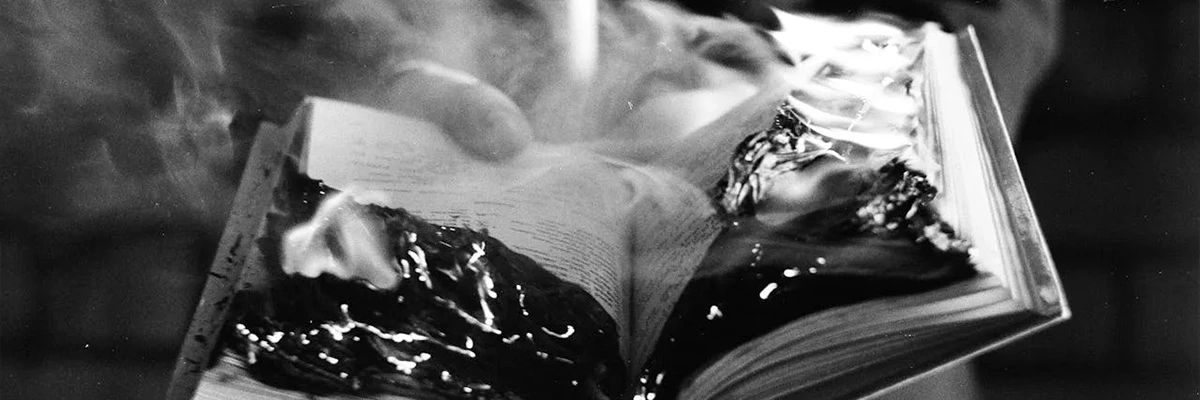
How to Choose a Horror / Gothic Book: A Reader’s Guide
Stop judging a book by its cover.
This is true for all literature, but it is an iron law for horror. A bloody axe, a screaming face, a shadowy figure on the cover these things rarely signal a truly terrifying book. More often, they signal a cheap thrill.
The real masterpieces of the genre, the true works of art, often wear very plain clothes.
Choosing your next horror book is not about finding the most gruesome image. It’s an act of emotional diagnosis. The real question is not “What looks scary?” The real question is “What kind of fear do I want to experience right now?”
Horror is not one thing. It is a vast spectrum, ranging from the quiet, creeping dread of a crumbling mansion to the explosive, visceral terror of a body coming apart. This horror reader’s guide is designed to help you navigate that spectrum. It’s a map of the different ways a book can unsettle you, organized by the specific “fear-signatures” of its most important subgenres.
If you want to know how to choose a gothic book, or any other kind of horror, you must first identify the “unsolved question” you are in the mood to explore.
The Fear of the Past: Gothic Horror
This is the genre of atmosphere. Gothic literature is defined by its mood. It generates fear not through sudden shocks, but through a slow, accumulating dread. Its primary fears are rooted in history, decay, and the inescapable influence of the past. The key ingredients are a decaying, labyrinthine setting (an ancient castle, a crumbling estate, a fog-shrouded abbey), a sense of profound isolation, and a dark, often aristocratic secret that refuses to stay buried. You choose this genre when you want to be submerged in a world of shadow and suggestion.
The Archetype: “Dracula” by Bram Stoker (1897)
“Dracula” is the absolute pinnacle of this. It is not scary simply because a vampire bites people. It is scary because of what that vampire represents. Stoker’s masterpiece is an “epistolary novel,” told entirely through letters, diary entries, and newspaper clippings. This structure itself is a source of fear. We, the reader, are piecing together the horror from fragmented accounts, powerless to warn the characters. The horror is the horror of the old world invading the new.

The Count is a symbol of a dead aristocracy, a feudal lord who “buys” his way into modern, industrial London, feeding on it not just for blood, but for its vitality. He is the past, and he is trying to stop the future. Furthermore, the book is saturated with a fear that its Victorian audience could barely name: the fear of unrestrained desire. Dracula’s bite is not just death; it is a dark, sensual, and liberating ecstasy. He represents a freedom (especially for the female characters) that is both intoxicating and terrifying to the rigid, repressed society he has entered.
The Fear of the Self: Psychological Horror
This subgenre rejects external monsters. Or, rather, it uses the possibility of an external monster (a ghost, a demon, a curse) as a surgical tool to pry open the protagonist’s psyche. The real horror is ambiguity. Is the house actually haunted, or is the narrator simply collapsing mentally? The genius of psychological horror is that the answer is “both,” or “it doesn’t matter.” The terror comes from paranoia, an unreliable narrator, and the dawning realization that the most dangerous place you can be is inside your own mind. You choose this when you are ready to accept that the “monster” might just be you.
The Archetype: “The Haunting of Hill House” by Shirley Jackson (1959)
“The Haunting of Hill House” is the definitive example of psychological horror. The story is simple: four people, led by a paranormal investigator, arrive at Hill House to see if it is, in fact, haunted. The house has a dark history. It is a “deranged” place. But the story is told primarily through the fractured perspective of Eleanor Vance, a lonely, repressed woman who desperately wants to belong to something. And Hill House, it seems, wants her to belong to it. Jackson’s prose is a masterpiece of misdirection.

The scariest moments are not supernatural events. They are quiet, internal shifts. The house does not use chainsaws. It whispers. It isolates. It makes Eleanor feel, for the first time, like she is special, like she is home. The core terror of the book is not the ghost. It is Eleanor’s gradual, horrifying, and almost willing dissolution of self. The house isn’t just attacking her; it’s inviting her to let go of the burden of her own personality.
The Fear of the Unknown: Cosmic Horror
This is philosophical horror. It is not the fear of a monster that wants to kill you. It is the fear of a universe that does not care that you exist. Its architect, H.P. Lovecraft, built a genre on the thesis that the human mind is a tiny, fragile island of sanity in a vast, black ocean of infinity, and if we ever truly understood our place in the cosmos, we would be driven instantly insane. The “monsters” of cosmic horror like the Great Old Ones are not “evil.” They are simply vast and ancient. Their consciousness is so alien that to even perceive them is to break your mind. You choose this genre when you are in the mood to feel small and insignificant.
The Archetype: “The Call of Cthulhu” (and other stories) by H.P. Lovecraft (c. 1928)
“The Call of Cthulhu” is the perfect summary of this fear. It is told as a collection of notes and reports. A man pieces together the puzzle of a global “cult” that worships an ancient, dormant being. He discovers that artists are having collective nightmares and that sailors encountered a “cyclopean” city that rose from the sea, a place of “non-Euclidean” geometry that makes no sense to the human eye. The horror comes from implication.

The terror is in the realization that humanity is a temporary accident, a speck of dust on a meaningless rock, and that “out there,” in the dark between the stars, are forces that could (and perhaps one day will) wipe us out without even noticing. You don’t read Lovecraft for characters or plot. You read him to confront the terrifying, paralyzing, and strangely beautiful idea of your own cosmic insignificance.
The Fear of the Flesh: Body Horror
This is a transgressive and philosophical genre. It argues that our “self” is inextricably tied to our flesh, and that if our flesh can be warped, torn, mutated, or “liberated,” then so can our very soul. Body horror is messy. It is visceral. It finds its terror in the violation of the one thing you take for granted: the integrity of your own physical form. It asks: Where does the “self” end and the “body” begin? What happens when that boundary collapses? You choose this when you are ready to explore the unsettling idea that you are your body.
The Archetype: “The Hellbound Heart” by Clive Barker (1986)
Clive Barker is the master of this, and “The Hellbound Heart” (the novella that became the movie “Hellraiser”) is his thesis. It’s the story of Frank Cotton, a hedonist who has exhausted all normal forms of pleasure. He seeks out a puzzle box that is rumored to open a doorway to a new realm of experience. On the other side are the Cenobites, “theologians of the Order of the Gash.” They are not demons; they are explorers. They have transcended the line between pleasure and pain, and their own bodies are grotesque masterpieces of modification.

The horror of the book is this philosophy of the flesh. It asks: Where does pleasure stop and pain begin? What happens when we try to break those limits? When Frank is brought back as a flayed, skinless, regenerating monster, the story becomes a brutal examination of identity. It forces you to look at your own hands and ask: What holds this together? And what happens if it fails?
A Note on Pacing: The Power of the Slow-Burn
Now that you have your subgenre, you must choose your tempo.
Much of the best classic horror falls into the “slow-burn” category. This is not a flaw; it is a feature.
A fast-paced horror novel is a rollercoaster. It is all about quick shocks, high adrenaline, and a breathless pace.
A slow-burn, in contrast, is an act of “marination.” It refuses to give you the shock upfront. It asks for your patience. It spends 100 pages on character and atmosphere before anything “scary” happens. It builds a world, it makes you care about the people in it, and it establishes a sense of normalcy.
And then it begins to corrupt that normalcy.
The slow-burn is powerful because it doesn’t just scare you; it invests you. The terror is more potent because it is happening to characters you know, in a world you have come to understand. The horror in “The Haunting of Hill House” or “Dracula” works because of the slow build. The dread accumulates. The screws are tightened, one tiny turn at a time, until the pressure is unbearable.
When you choose a slow-burn, you are choosing to let the author build the haunted house inside your own head. It is a more patient, more insidious, and often far more permanent kind of fear.
Conclusion: Finding Your Fear
There is no such thing as a “universally scary” book. Fear is not universal. It is deeply personal.
This horror reader’s guide is just a map. The territory it describes is you. The true art of how to choose a horror book is an art of self-reflection.
Are you afraid of losing control of your mind? (Psychological). Are you afraid of the past? (Gothic). Are you afraid of the universe? (Cosmic). Are you afraid of your own body? (Body Horror). Are you afraid of the society you live in? (Slasher).
The best horror novel for you, right now, is the one that finds your own personal, hairline cracks. It’s the one that slips a finger into those cracks and gently, or violently, begins to pull.
Do not be afraid to experiment.
Recommended for you

How to Take Notes from Books and Lectures
Look at a typical student’s notebook after a lecture. What you will likely see is a dense, frantic wall of text. The student has spent 50 minutes in a desperate sprint, trying to act as a human stenographer, to capture every word the professor said. They leave the lecture exhausted, with cramped hands and a […]
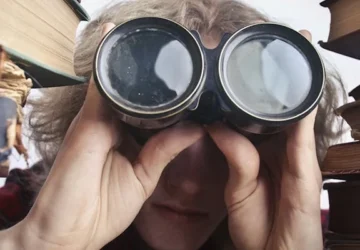
Travel Through Pages: Literature for Explorers
What defines “literature for explorers”? The easy answer is a story about a journey. A book that moves, that chronicles a voyage from a safe harbor to a wild, unknown land. We think of travelogues, memoirs, or survival stories. But this definition is incomplete. It’s too literal. A true story for explorers is not just […]

Philosophy Books That Change Worldviews
Some books are entertainment. Some are information. A very small few are dynamite. They don’t just add to what you know; they change how you know it. They are philosophy books that change worldviews by locating the hidden assumptions you live your life by the very foundations of your “common sense” and putting a metaphorical […]

What Age Do Kids Start Reading and How to Support Their Learning
There is one question that lives in the back of nearly every new parent’s mind, a question often loaded with anxiety: “What age do kids start reading?” We see other children in preschool who can already identify words. We hear conflicting advice. We are programmed to look for a single, specific milestone age 5, age […]
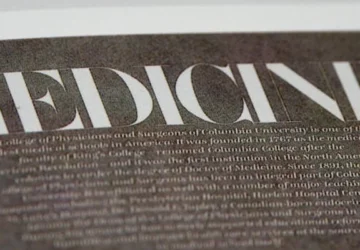
Top Books for Medical Students
Medical school is an onslaught of information. You will spend the next four years (and beyond) immersed in a world of complex facts, intricate diagrams, and high-stakes exams. Your primary focus, understandably, will be on mastering the science of medicine. But becoming a great doctor requires more than just knowing the Krebs cycle or the […]

Books Every Student Should Read Before University
University is not just the next step after school. It is a fundamentally different kind of intellectual environment. High school often rewards memorization and acceptance of authority. University, at its best, rewards questioning. It is not just about learning what to think; it is about learning how to think. It is about engaging with complex, […]
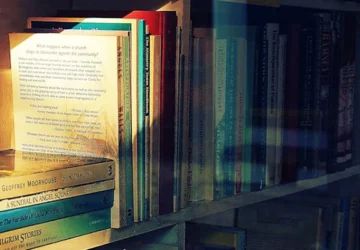
Best Biographies of Influential Figures
What makes a biography “great”? The simple answer is “accuracy.” A good biography, we assume, is one that gets all the facts right. It has the correct dates, the verified quotes, the detailed footnotes. This answer is true, but it is incomplete. It is the answer for a historian, not a reader. A simple collection […]
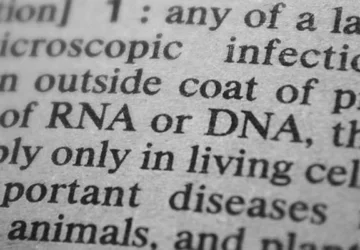
Molecular Biology and the Books That Defined It
What is life? For millennia, this question was the domain of priests, philosophers, and poets. It was a question of “spirit,” of a “vital spark,” of a “ghost in the machine.” Then, in the middle of the 20th century, a new group of thinkers took over. They were physicists, chemists, and biologists, and they approached […]